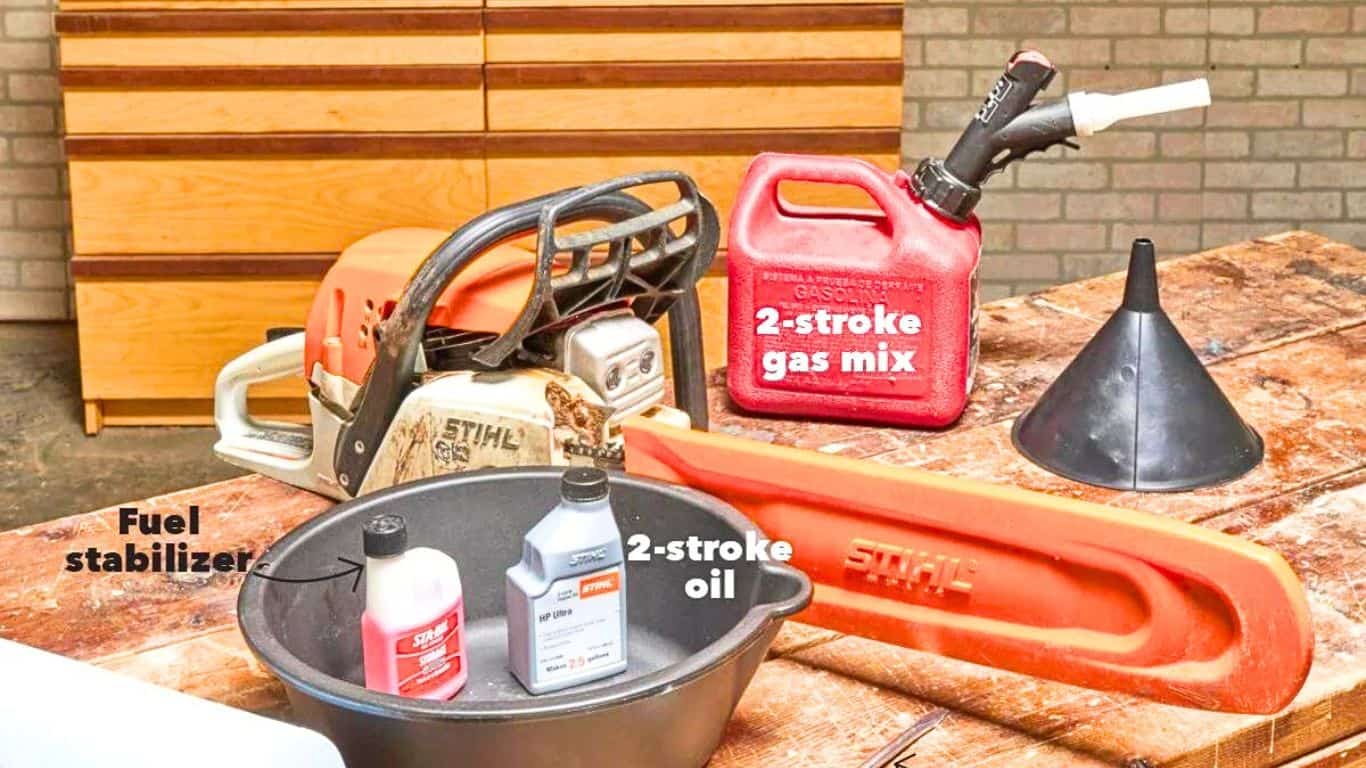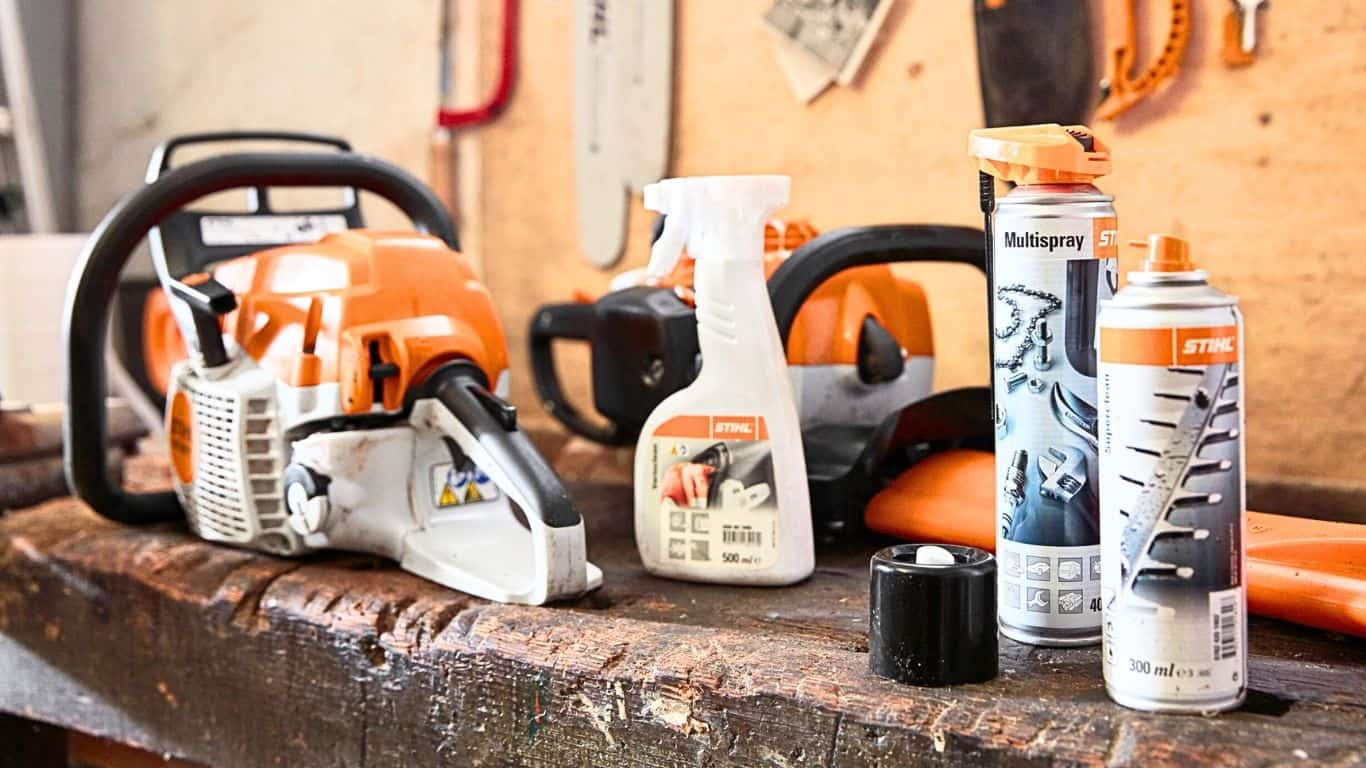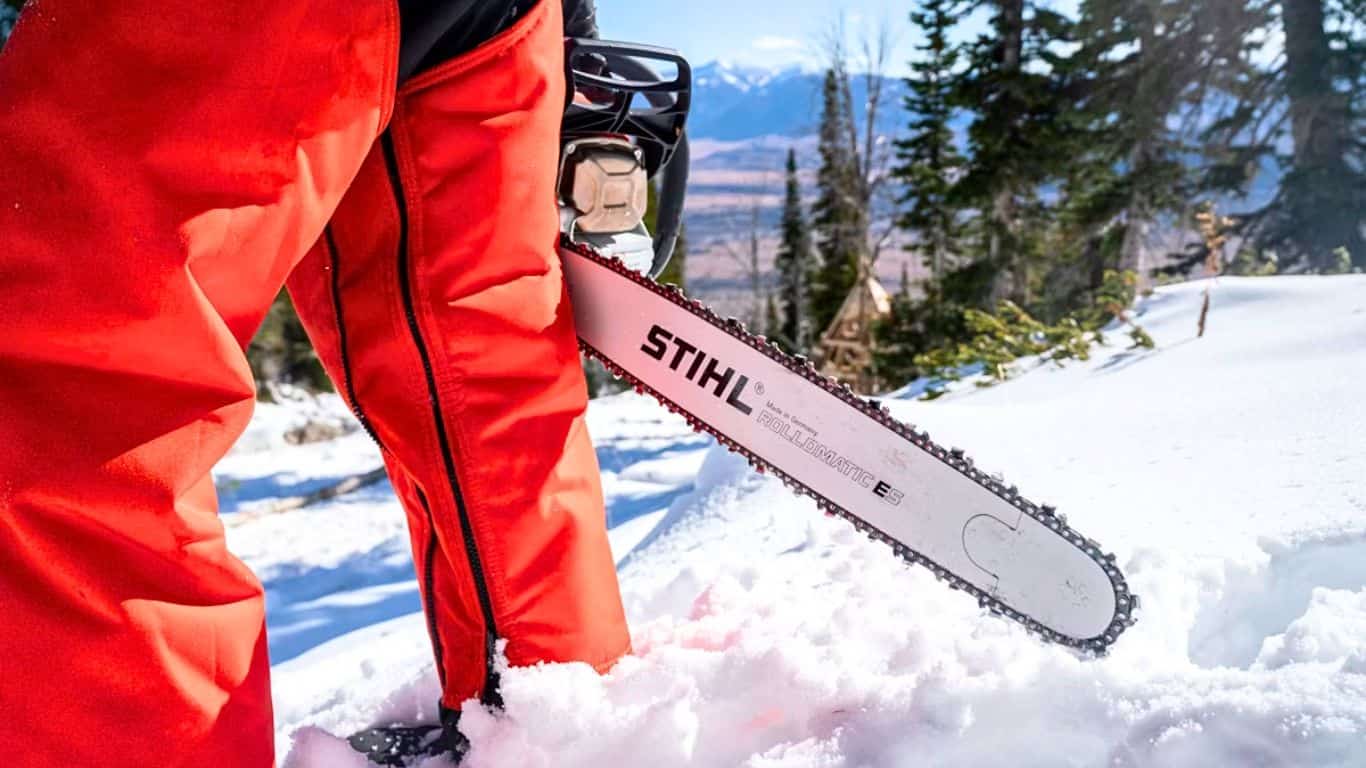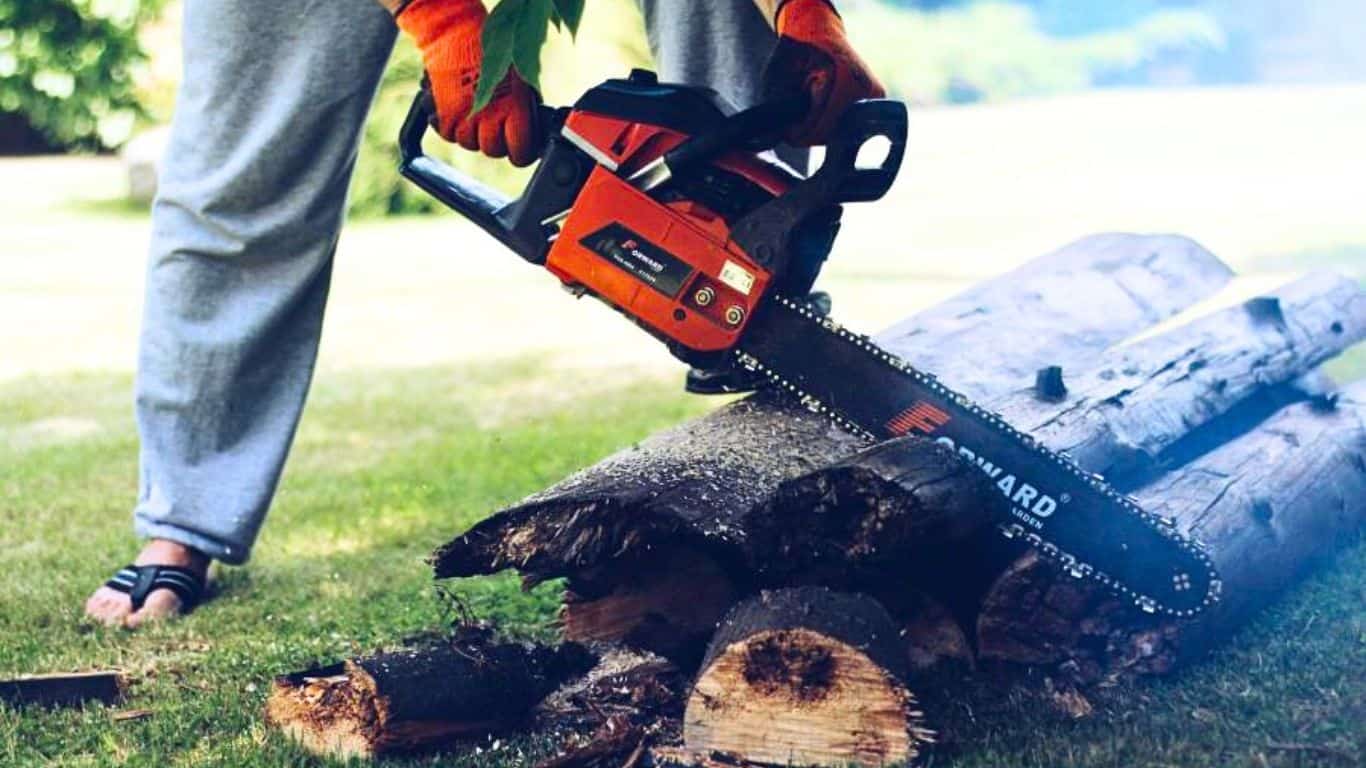As winter prevails, the chainsaw emerges as a true warrior of the wilderness. Did you know that chainsaws are indispensable tools, responsible for nearly 36,000 emergency room visits in the United States alone each year? With their mighty power and versatility, these woodcutting beasts are essential companions for loggers and outdoor enthusiasts alike. However, just like any seasoned warrior, a chainsaw needs proper preparation and care to conquer the frozen battlegrounds of winter.
Cold temperatures can be challenging for small engines, but with the proper steps, you can keep your chainsaw in top shape and ready to tackle any cutting job, even in the coldest winters.
Fear not, for we are here to arm you with the knowledge to winterize your chainsaw effectively, ensuring it stays in peak performance throughout the cold months. In this elaborate guide, we’ll embark on a journey to uncover the secrets of winterizing your chainsaw, delving into each step with precision. So, embrace the call of the winter winds and let your chainsaw be the hero of the season as we dive into the art of winterization. Are you ready to embark on this snow-blanketed adventure?
Let’s get started!
How to Winterize a Chainsaw – Step-By-Step Guide
Here is the step-by-step guide for winterization of the chainsaw, follow them carefully:
Tools and Materials Required
You will need a few essential tools and materials to properly winterize your chainsaw. Here’s a list of what you’ll need:
Cleaning Tools:
- A soft brush or old toothbrush: For cleaning dirt, sawdust, and debris from the chainsaw’s exterior and components.
- Compressed air: Useful for blowing away hard-to-reach debris and cleaning the air filter.
- Cloth or paper towels: To wipe down the chainsaw and ensure it’s free from any remaining dirt or moisture.
Replacement Parts:
- Spark plug: A new spark plug suitable for your chainsaw model and recommended by the manufacturer.
- Bar and chain (if necessary): If the current bar or chain is damaged or worn, consider replacing it before the winter season.
Fuel-related Materials:
- Fresh gasoline: If you plan to use the chainsaw during the winter season, make sure you have fresh, high-quality gasoline.
- Fuel stabilizer: If the chainsaw will be in storage for an extended period, a fuel stabilizer will help prevent gasoline degradation.

Lubrication:
- Chainsaw bar oil: High-quality bar oil designed for chainsaws, which remains effective in cold temperatures to keep the chain and bar lubricated.
Protective Storage:
- Chainsaw case: If your chainsaw came with a protective case, use it to store the chainsaw safely when not in use. If not, consider investing in a suitable case or cover to shield the tool from dust and moisture during storage.
Miscellaneous:
- Safety equipment: Don’t forget to wear appropriate personal protective equipment, such as gloves, eye protection, and hearing protection, when working with the chainsaw.
- Owner’s Manual: The chainsaw’s owner’s manual is a valuable resource that contains specific information about your chainsaw’s maintenance and care, including winterization guidelines.
Step 1. Clean and Inspect
Before winterizing your chainsaw, it’s essential to give it a thorough cleaning. Remove any debris, sawdust, or sap that might have accumulated during the last season. Use a brush or compressed air to clean the air filter and ensure proper airflow. Inspect the chainsaw for any loose or damaged parts, such as the chain, bar, and handles. For this step, you must have knowledge of the parts of chainsaws. Replace any worn-out or damaged components as needed, so your chainsaw starts the winter season in peak condition.

Step 2. Replace the Spark Plug
A fresh spark plug is vital for smooth starting and efficient operation in colder temperatures. Remove the old spark plug and replace it with a new one, following the manufacturer’s specifications for the correct spark plug type and gap setting. This simple step can significantly improve your chainsaw’s performance during winter. We have also published an article on how to tune a chainsaw, must give it a read to know the important things about chainsaw maintenance.
Step 3. Check the Fuel System
Stale fuel can cause starting issues and damage your chainsaw’s engine. Before storing your chainsaw for the winter, it’s crucial to empty the fuel tank and run the engine until it runs out of gas. This step helps prevent gum buildup in the carburetor and fuel lines.
If you plan to use your chainsaw occasionally during winter, use a fuel stabilizer to prevent the fuel from going bad. Add the stabilizer to fresh gasoline and run the chainsaw for a few minutes to ensure the treated fuel reaches the carburetor.
Step 4. Lubricate the Chain and Bar
Proper lubrication is essential to prevent rust and ensure smooth operation. Before winter storage or after each use in cold weather, lubricate the chain and bar with a high-quality chainsaw bar oil. The bar oil is specially formulated to withstand low temperatures, ensuring your chainsaw runs smoothly during the winter months.

Step 5. Store in a Dry Location
During the winter months, it’s best to store your chainsaw in a dry and protected location, such as a shed or garage. Avoid leaving it outside, as exposure to the elements can lead to rust and other damage. If your chainsaw has a protective case, use it to shield the tool from dust and moisture. For further details read our article on Chainsaw maintenance tips for beginners. I am sure I will help you a lot in your winterizing journey.
Step 6: Regular Maintenance
While your chainsaw is in winter storage, it’s a great time to perform routine maintenance tasks. Every month or so, check the chain tension, clean the air filter, and inspect the spark plug. Doing so will help identify any potential issues early on and ensure your chainsaw remains in excellent condition throughout the winter.
Tested Ways to use Chainsaws in Freezing Weather
Using a chainsaw in freezing weather requires extra care and attention to ensure both your safety and the optimal performance of the tool. Cold temperatures can present unique challenges, but with the right approach, you can make the most of your chainsaw even in icy conditions. Here’s a detailed and unique guide on how to use a chainsaw in freezing weather:

Dress for the Elements:
Before venturing out into the frozen landscape, dress appropriately for the cold weather. Wear insulated, waterproof clothing to keep yourself warm and dry. Don’t forget to wear insulated gloves to protect your hands from the biting cold and ensure you maintain a firm grip on the chainsaw’s handle.
Fuel and Lubrication:
Ensure your chainsaw is fueled with fresh gasoline mixed with the correct oil-to-gas ratio. In freezing weather, opt for a winter-grade bar oil that remains fluid in lower temperatures. Proper lubrication is crucial to reduce friction and prevent the chain from freezing up, ensuring smooth operation.
Warm Up the Chainsaw:
Allow the chainsaw to warm up for a few minutes before starting any cutting tasks. Cold weather can stiffen the engine’s internal components, and a warm-up period helps ensure optimal oil circulation and smooth operation.
Clear Snow and Ice:
Before starting your cutting tasks, clear away any snow or ice from the cutting area. Snow accumulation around the chainsaw’s chain and bar can interfere with its proper functioning, making cutting more challenging and potentially unsafe.

Check Chain Tension:
In freezing weather, the chain may contract, leading to decreased tension. Regularly check the chain tension and adjust it as needed before and during use. A loose chain can lead to inefficient cutting and an increased risk of kickback. These are the freeze problem that you might face in cold temperatures.
Be Mindful of Kickback:
Freezing weather can affect the cutting efficiency of the chainsaw, making it more susceptible to kickback. Always maintain a firm grip and use proper cutting techniques, such as cutting with the lower half of the chain and keeping the chainsaw’s nose away from the cutting surface.
Monitor Fuel Levels:
In cold weather, the chainsaw’s engine may consume fuel at a slightly faster rate. Keep an eye on the fuel level, and ensure you have enough fuel to complete your tasks safely without running out in the middle of the job.
Take Breaks to Warm Up:
Working in freezing temperatures can be physically demanding. Take regular breaks to warm up and avoid overexertion. Keep spare gloves, socks, and warm drinks handy to replenish your energy and keep your body comfortable.

Store Properly:
Once you’ve completed your tasks, store the chainsaw in a dry, protected location. Remove any snow or ice from the chainsaw’s exterior before storage to prevent damage. For more details to know that how to clean a chainsaw, you can read it.
Tip: Remember, safety is paramount when using a chainsaw in freezing weather. By following these guidelines and staying mindful of the unique challenges posed by the cold, you can use your chainsaw efficiently and safely throughout the winter season.
How to Winterize a Chainsaw – FAQs
Conclusion
Winterizing your chainsaw is a crucial step to keep it running smoothly and efficiently during the cold months. By following these steps and performing regular maintenance, you can ensure that your chainsaw is always ready for any cutting task, even in the harshest winter conditions. Taking the time to prepare and care for your chainsaw will not only extend its lifespan but also ensure your safety while operating the tool. Remember, a well-maintained chainsaw is a reliable companion in any season. Happy winter cutting!




